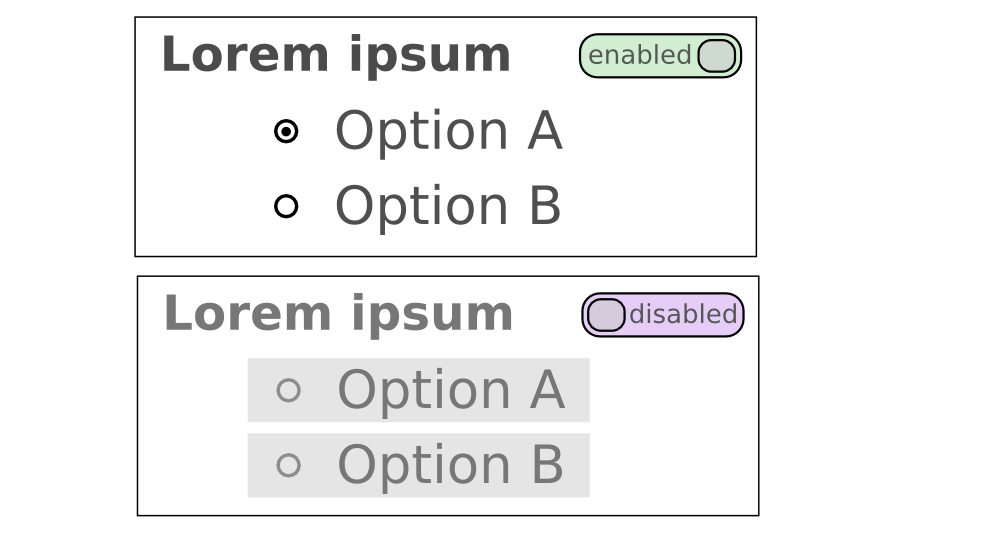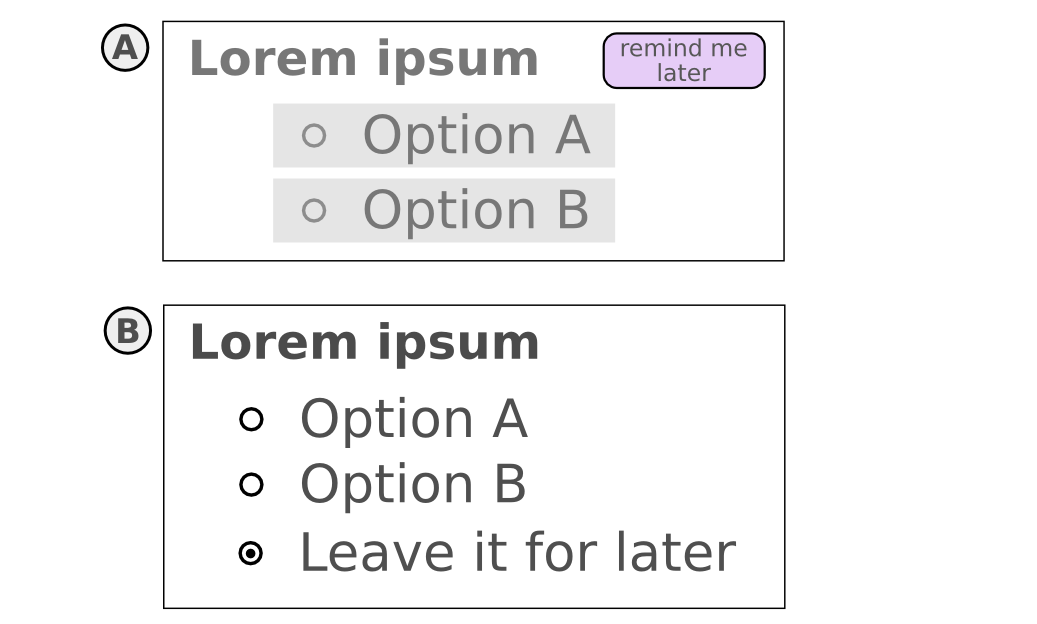Context: In our application we implemented a responsive disclosure. Currently the choices the user can make are rendererd as a set of radio buttons. Currently there a two valid options, A and B. When the user initially opens the dialog NONE of these is selected. The user can close the dialog with ok even if he didn't choose any options in the disclosure. The underlying object is in an error state as long as the user didn't choose any option in the disclosure but the user can fix this at a later time, so he isn't force to make the choice right away (the first time the dialog is opened).
Question: In rare cases the user should be able to "deselect" his choice. Radio buttons usually cannot be deselected. To give the user the possibility to "double click on a selected radi obutton to deselect" seems to me like a break in consistency (on a component level).
The cleanest solution would be to add an additional "Not selected"-Option to Option A and B. The problem is that this error state is rendered equal to the other two Options although its an error state for the underlying object. (We intend to render an error marker for all fields which are not correctly filled out) Our current approach would be to render a combobox with an empty selection with "Please select" like we see it in web forms. Other parts of the application also use this behavior of an empty selection in a combobox so its nothing knew to them.
But is this a good idea? Is it ok to render an option in a radio group even if its choice is an error state? Are their any other options?
Edit: Clarification: In the end the user has to make a decision. Dialog is used from multiple users bot not every user has the knowledge to make a decision for the radio buttons.



